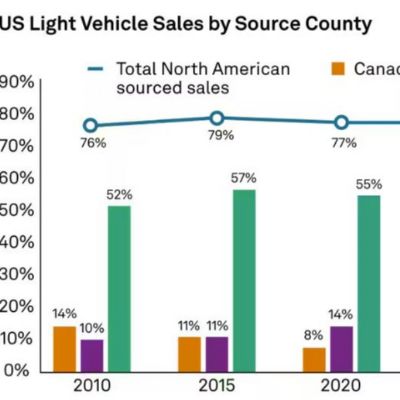Trade Events: Maximize Results by Closing New Business
June 1, 2009Comments
If you haven’t finished planning for the November METALFORM show in Chicago, don’t worry, you still have time. But it’s dwindling fast, so better get a move on! And, if you’re undecided on exhibiting at trade events due to the recession, then think again. Done right, trade events can bring your best return on promotional spending investment, but you need to really establish why you’re at these shows—what is your primary objective?
According to Skyline Exhibits’ senior marketing consultant Jennifer Kilbride, each year companies in the United States and Canada spend $170 to $190 billion on promotional events comprised of trade exhibitions, conferences, regional and private shows—up from 2007’s $135 to $150 billion. According to the Center for Exhibition Industry Research (CEIR), whose census of exhibition attendance and revenue sets the industry standard, over the past 40 years the percentage of attendees with buying plans has not changed significantly in times of recession.
And, thanks in part to the economy, buyer density has increased as multiple major events have
Accompanying the mega-event trend is a reduction in buying teams. Many companies have, due to workforce consolidation and travel-budget limitations, cut their buying teams and are sending more informed duos or sole decision-makers. More qualified buyers and less bureaucracy adds up to a more compelling value proposition for trade events. But this is only half of the story; careful planning and execution reduces stress and frustrations and brings maximum results.
With empowered decision-makers attending shows and 70 percent of them planning on spending, why do exhibitors sometimes beat around the bush? Are sales professionals exhibiting to make an appearance for the sake of brand reinforcement, to stay on someone’s radar, to introduce a new product or capability, to display a ‘living’ advertisement or generate leads to feed field sales reps with follow-up sales calls? If so, why? If the majority of attendees are coming with the intention of buying, then why make them wait for a follow-up? Is your competition going to close the deal on the floor or keep the door open for rivals to follow-up after the show? Are you? What are you planning to accomplish at the event? If two-thirds of the attendees are coming to buy, then come ready to sell?Align yourself with the 70 percent who are ready to buy; prepare to close orders. Come ready to address all aspects of the sales process in short order, from needs assessments and product demonstrations to producing firm quotes and having the authority on-site to negotiate final terms and accept orders. If your product or service is more complex and your customers far-flung, then work ahead of the show to address application requirements with an eye toward hosting a final negotiating/closing meeting at the show. Where else can you more cost-effectively pull together a succession of closing meetings where your sales management team and your key prospective customer’s decision-makers can assemble and quickly come to terms? This is the time and place and buyers are ready to buy, so seize the opportunity.
While we’re not going to cover how to prepare for a show from a promotional standpoint, as this is the topic of a future column. We will address a few critical pitfalls that you must avoid at all costs, as failure here can derail the best-laid sales plans. These pitfalls all speak to presentation and prospect perception. In short, put your best effort forward. Time and again while scouting shows I witness empty booths during prime event hours or, even worse, ill-prepared or poorly coordinated booth staff that are tarnishing the company’s reputation and brand through their unprofessional appearance and actions. Considering the cost and hard work behind your exhibition efforts and the shear numbers of eyes on your brand, there is no excuse for accepting anything less than the highest level of professionalism from your staff. What follows is a list of ‘perception killers’ that you would hope to never witness at a trade event, but you’d be surprised how often you’ll notice each the next time you walk an event floor with a critical eye on booth personnel.









